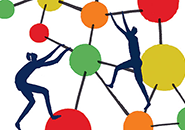
Scientific Discipline
Neuroscience
Related Links
Host Institution
Janelia Research Campus
Current Position
Dr. Ji is a group leader at the Janelia Research Campus.
Research
Adaptive Optics for Structural and Functional Imaging of Neural Circuits
Na Ji develops adaptive optical methods to improve imaging resolution in vivo. She applies these methods to the structural and functional imaging of neural circuits.
Biography
Na Ji's fascination with neurobiology stems from a deep curiosity to understand the world around her. Having studied chemistry and physics as a student, Ji thought she had a good grasp of molecules and atoms but knew little about living organisms. In particular, she says, "I did not understand the brain, the organ that enabled me to learn physics and chemistry."
Now, at the Janelia Research Campus, Ji is developing imaging tools capable of peering deep inside animals' brains to better comprehend the circuits responsible for how this organ functions.
In doing so, Ji has to reach across scientific boundaries—which is nothing new for her. "I have always been working at the interface of scientific subjects," she explains. "I find it exciting to speak their different languages." For her undergraduate degree at the University of Science and Technology of China, Ji studied chemical physics. She continued to combine the two disciplines for her Ph.D. at the University of California, Berkeley. There she worked with physicist Yuen-Ron Shen to interpret the behavior of molecules, using advanced optical techniques she helped to develop.
At the end of her Ph.D. studies, Ji faced the choice of continuing on with the same line of research where she had been very successful or taking a chance at reinventing herself as a neurobiologist. She decided to take a chance. She started a postdoc position at Janelia under the supervision of Eric Betzig, who was working on developing microscopy tools for imaging mouse brains.
"I wanted an introduction to biology and I thought Janelia would be a very good place for that," recalls Ji. What appealed to her about Janelia was its interactive environment. "I was at Berkeley for 6 years and I talked to 9 or 10 people about their work," says Ji. "In my first 2 months at Janelia I probably talked to 50 scientists."
At Janelia, Ji started working on an important problem in neurobiology: how to better visualize cells buried deep inside the brain of living animals. Because the brain is made up of many different types of cells and tissues, when light travels through it to form a focus, the various components bend light in different and unpredictable ways. The result is a blurry image, which becomes more blurry as the depth of the tissue increases.
To address this problem, Ji and Betzig borrowed a strategy used by astronomers to sharpen the images of celestial bodies. When astronomers look at the stars or other objects in the sky, the light returning from them is distorted by the atmosphere (resulting in the familiar twinkling of the stars). Astronomers have therefore developed tools and techniques, referred to as "adaptive optics," to correct for these distortions of light and thus obtain sharper images. "We reasoned that adaptive optics, suitably modified for imaging in biological tissue, could produce similar gains in microscopy," explains Ji.
Ji and Betzig combined adaptive optics with two-photon fluorescence microscopy, a key method by which neuroscientists study single cells within tissues that scatter light. This strategy, described in Nature Methods in 2009, demonstrated their ability to obtain optimal fluorescence imaging and high resolution through sections of brain tissue up to 400 micrometers thick, something no one had been able to achieve. Since then, Ji has collaborated with neuroscientists at Janelia to apply her adaptive optics technique to image neurons deep inside the brains of living mice.
Ji says the close interaction with biologists at Janelia has been critical to her work. "We talk to biologists all day. They can tell me if a new technique I am working on is valuable to them. If they say 'We can get the same information using another method' I know not to pursue that project," she says.
As she starts her own lab at Janelia, Ji plans to improve her adaptive optics microscopy technique as well as broaden its use for work in other tissues, such as the eyes, and with other types of microscopy. "I sit in awe of how much we still don't know about the brain," she says. "I feel very excited to be devoted to a field where I think there will be so much to learn."
Articles & News
Research Papers
Selected Research Papers



